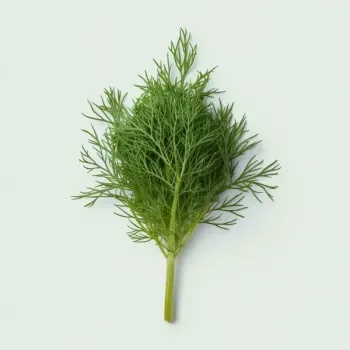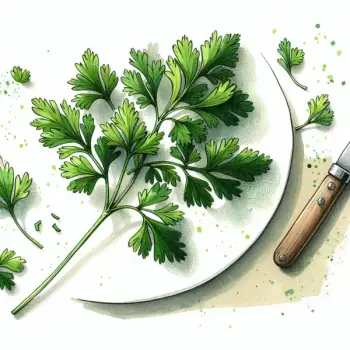Dill and parsley are aromatic herbs used in cooking for their unique flavors and garnishing properties, with dill being sweet and feathery, often paired with seafood, and parsley being peppery and versatile, suitable for a wide range of dishes.

Dill is an aromatic herb with fine, feathery leaves. It is commonly used in European and Asian cuisines for its fresh and slightly grassy flavor. Dill is particularly favored in dishes like pickles, fish, and soups.

Parsley is a bright green herb that is used in various cuisines around the world. It has a clean and peppery taste with a touch of earthiness, making it an excellent garnish and flavor enhancer in dishes like salads, sauces, and stews.
Dill has a distinct taste that is aromatic and somewhat sweet, with a soft, delicate texture. Parsley, on the other hand, has a fresh, slightly peppery flavor with a more robust and crisp texture.
Dill is often associated with seafood, potatoes, and pickling, whereas parsley is more versatile and used as a garnish, in herb blends, and as an integral component of many dishes for its flavor.
Dill is a staple in Scandinavian and Eastern European cuisines, while parsley is ubiquitous in Mediterranean, Middle Eastern, and American cooking.

Your ultimate Recipe Box, Meal Planner, and Cooking Class all in one
Dill pairs exceptionally well with fish and seafood. It's commonly used in recipes like gravlax, creamy dill sauce for salmon, and shrimp dishes. The herb imparts a delicate flavor that complements the seafood without overpowering it. Parsley can be used in seafood dishes like shrimp scampi, fish stews, and as a garnish on grilled fish. It adds a fresh note that balances the richness of seafood.
Dill is commonly used in soups and stews with a lighter base, such as chicken soup or potato stews. It adds a unique flavor profile that can make a dish taste distinctly Eastern European or Scandinavian. Parsley is versatile in various soups and stews, from beef stew to minestrone. It's often added at the end of cooking to retain its color and flavor, providing a fresh contrast to hearty dishes.
Dill works well in creamy sauces like tzatziki, dill mustard sauce, and in dressings for potato or cucumber salads. Its unique taste can elevate the flavor profile of a simple sauce or dressing. Parsley is a key ingredient in sauces like chimichurri, salsa verde, and gremolata. Its bright flavor cuts through the richness and complements other herbs and acidic components in dressings.
Both dill and parsley are low in calories and rich in vitamins and minerals, such as vitamin A, vitamin C, and iron.
| Nutrient | Dill ( per 100 grams ) | Parsley ( per 100 grams ) |
|---|---|---|
| Fat | 1.1g | 0.8g |
| Iron | 6.59mg | 6.2mg |
| Protein | 3.5g | 3g |
| Calories | 43 | 36 |
| Vitamin C | 85mg | 133mg |
| Carbohydrates | 7g | 6.3g |
While you can substitute dill for parsley, it will significantly change the flavor profile of the salad, giving it a more Scandinavian or Eastern European taste.
Dill is traditionally favored for fish due to its delicate flavor that pairs well with seafood, but parsley can also be used to add a fresh note.
Both herbs should be stored in the refrigerator. Dill can be wrapped in a damp paper towel and placed in a plastic bag, while parsley can be kept in a glass of water with a plastic bag over the leaves.
Yes, both are low in calories and provide a good amount of vitamins and minerals, although they each have their unique nutritional benefits.
Consider the flavor profile of your dish and the cuisine you are cooking. Dill offers a sweet, grassy taste suited for light dishes and seafood, while parsley's peppery flavor is more versatile and can complement a wide range of recipes.